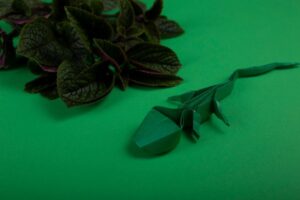Beading is an art form that allows you to create beautiful jewelry and accessories through the arrangement of beads. Whether you’re new to beading or looking to improve your skills, mastering the basics is essential. In this article, we will explore seven valuable tips for beginners that will help you kickstart your beading journey with confidence. By following these tips, you’ll be well-equipped to create stunning beadwork and unleash your creativity.
1: Choose the Right Beads
When it comes to beading, choosing the right beads is crucial. Consider the size, shape, color, and material of the beads to ensure they align with your project’s vision. Explore a variety of bead types, such as glass beads, gemstone beads, or seed beads, to add diversity and texture to your designs.
Experiment with different bead sizes to achieve the desired look and feel. Larger beads are ideal for statement pieces, while smaller beads work well for delicate designs. Keep in mind that consistency in bead size will result in a polished final product.
The color of your beads plays a significant role in the overall aesthetic of your project. Consider complementary or contrasting color combinations to create visual interest. Remember to take into account the style and theme you want to convey through your beadwork.
Explore different bead materials, such as glass, metal, or natural stones, to add depth and texture to your designs. Each material has its unique characteristics, so don’t be afraid to experiment and discover your favorite mediums.
Lastly, always ensure that the beads you choose are of high quality. This will ensure durability and longevity in your finished pieces. Be mindful of any potential allergies or sensitivities when selecting bead materials.
2: Gather Essential Tools
Having the right tools is essential for a smooth and enjoyable beading experience. Some essential tools include beading needles, beading thread or wire, scissors, and pliers. Beading needles come in different sizes, so choose one that suits the bead size and thread thickness you’re working with.
Beading thread or wire is crucial for securing your beads in place. Different projects may require different thread materials, such as nylon, silk, or wire. Experiment with various options to find the one that suits your project best.
Scissors are necessary for cutting thread or wire cleanly and precisely. Invest in a pair of sharp, dedicated beading scissors to ensure accurate and neat cuts.
Pliers are essential for opening and closing jump rings, attaching clasps, or manipulating wire. Flat-nose pliers and round-nose pliers are two common types that can handle a variety of tasks. Consider adding these versatile tools to your beading kit.
To keep your workspace organized, consider investing in a bead mat or tray. These tools prevent beads from rolling away and allow for easy sorting and storage. A well-organized workspace will save you time and frustration during your beading sessions.
3: Learn Basic Beading Techniques
Learning basic beading techniques is crucial for building a strong foundation in this craft. Start with stringing techniques, such as single-strand or multi-strand stringing, to get comfortable with threading beads onto your chosen material.
Explore knotting techniques, like overhand knots or surgeon’s knots, to secure your beads in place. Practice tying knots that are secure but not too tight, allowing for movement between beads.
Master the art of attaching findings, such as clasps, jump rings, or ear wires, to complete your jewelry pieces. These findings ensure your creations are wearable and functional.
Consider exploring bead weaving techniques, such as peyote stitch or brick stitch, to create intricate patterns and designs. These techniques open up a world of possibilities for creating unique beadwork.
Experiment with wirework techniques, such as wire wrapping or wire looping, to add dimension and structure to your designs. Wire can be used to create intricate shapes, frames, or decorative elements.
4: Practice Consistency in Tension
Maintaining consistent tension while beading is crucial for achieving professional-looking results. Practice threading beads with even spacing and tension to create a uniform and polished appearance.
Avoid pulling the thread or wire too tightly, as it can distort the shape of your beadwork. Similarly, be cautious of leaving the thread too loose, as it can result in loose or shifting beads. Finding the right balance will ensure a cohesive and visually pleasing finished piece.
Experiment with different thread or wire thicknesses to find the one that works best for your desired tension. Thicker threads or wires provide more stability, while thinner ones allow for more flexibility and drape.
As you gain experience, your tension will naturally improve. Don’t be discouraged if your first projects don’t turn out exactly as planned. With practice, your control over tension will become more refined, resulting in beautifully crafted beadwork.
Remember that beading is a creative and enjoyable process. Embrace the learning curve, have patience with yourself, and allow room for experimentation. Over time, you’ll develop your own unique style and rhythm when it comes to maintaining tension in your beadwork.
5: Explore Different Beading Stitches
In addition to basic beading techniques, exploring different beading stitches will expand your repertoire and allow you to create more intricate and detailed designs. Popular stitches include peyote stitch, herringbone stitch, right angle weave, and brick stitch. Each stitch has its unique characteristics and creates different textures and patterns in your beadwork. Invest time in learning and practicing these stitches to elevate your beading projects.
Peyote stitch, also known as gourd stitch, is a versatile stitch that creates a smooth and flexible fabric of interconnected beads. It can be used to create flat designs, tubular shapes, or even three-dimensional objects.
Herringbone stitch, also called Ndebele stitch, creates a zigzag pattern that resembles the bones of a fish. This stitch is ideal for creating bracelets, necklaces, or decorative elements.
Right angle weave, often abbreviated as RAW, is a versatile stitch that creates a grid-like structure by weaving beads together. This stitch is perfect for creating geometric shapes or adding embellishments to your designs.
Brick stitch is a versatile stitch that resembles the pattern of brickwork. It allows you to create unique patterns, shapes, and even intricate beadwork designs by stacking beads on top of each other.
6: Embrace Color and Texture
Color and texture are essential elements in beadwork. Experiment with different color combinations to create visually striking designs. Consider color theory principles, such as complementary or analogous colors, to achieve harmonious compositions. Incorporate beads with varying finishes, such as matte, glossy, or metallic, to add texture and depth to your creations.
Play with the placement of colors to create focal points or gradient effects in your designs. Introduce contrast by pairing bold, vibrant beads with softer, more neutral tones. Let your creativity soar as you explore the endless possibilities of color and texture in your beadwork.
7: Seek Inspiration and Refine Your Skills
Inspiration can be found everywhere, from nature to art, fashion, and other forms of creative expression. Explore beadwork magazines, online platforms, and social media groups to discover the work of talented artists and beaders. Use these sources as inspiration to spark your own ideas and designs.
In addition to seeking inspiration, continue to refine your skills through practice and exploration. Attend workshops, join beading communities, and engage in discussions with fellow beaders. Sharing knowledge and experiences will enhance your understanding of techniques and expand your creativity.
Challenge yourself to try new techniques, experiment with different bead sizes and shapes, and push the boundaries of your comfort zone. Embrace the learning process and view mistakes as opportunities for growth and improvement. Beading is a lifelong journey of discovery, so never stop exploring and expanding your skills.
As you progress in your beading journey, consider sharing your work with others. Participate in local craft fairs, create an online portfolio or social media presence, or even gift your creations to friends and loved ones. Sharing your beadwork not only brings joy to others but also builds confidence in your abilities.
Remember, beading is a form of self-expression and a way to unleash your creativity. Enjoy the meditative and relaxing nature of the craft, and let the beads guide you as you transform them into beautiful and meaningful creations.
Conclusion
By following these seven tips for beginners in beading, you’ll develop a solid foundation and embark on a fulfilling creative journey. From choosing the right beads and tools to learning basic techniques, practicing consistent tension, exploring different stitches, embracing color and texture, seeking inspiration, and refining your skills, each aspect contributes to your growth as a beader. Embrace the joy of beadwork, express your unique style, and let your creativity shine through as you create stunning and personalized beadwork. Happy beading!



